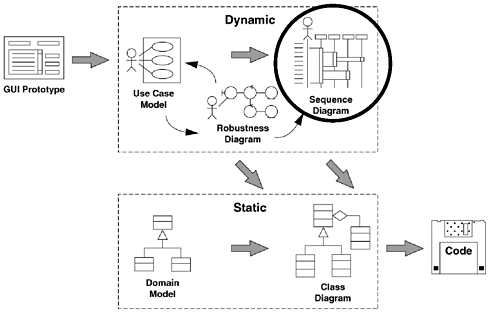After we finish our robustness diagrams and have a preliminary design review, it's time to move forward into detailed design. Robustness analysis-preliminary design-is about object discovery. Detailed design is largely about allocating behavior: allocating the software functions we have identified into the set of objects that we have discovered. In this chapter, we focus on the sequence diagram as the central element of detailed design, or at least of the dynamic part of our object model.
Once we're through doing preliminary design using robustness analysis, we'll go back through our scenarios and do a second, more detailed pass through the design. We're going to take another look at our informal first guesses at how these objects collaborate together and make those statements very precise. By the time we get to this point of the project, we should have accomplished two things. First, our use case text should now be very complete, correct, detailed, and explicit. Second, we should have discovered most of the objects that we're going to need in the system, at least at a conceptual, or idealized, level of abstraction.
Figure 7-1 shows where sequence diagrams reside within the "big picture" for the ICONIX process.
